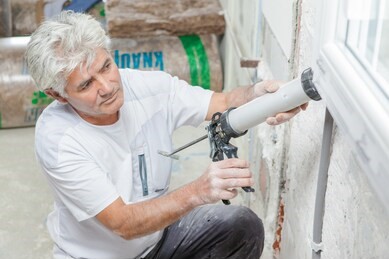WHY WINTERIZATION PROCESS IS NEEDED?
WHY WINTERIZATION PROCESS IS NEEDED?
What Is Winterization?
Have you ever wondered! When the season of snow arises, why you face the vandalization in your pipes, water heaters, and other water supplies? The simple explanation is that when water freezes, its molecules expand and become ice. The expansion of the water molecules generates pressure within the pipes and this causes devastation of the entire system. Winterization is the process of securing these issues with some very manageable steps. This process involves the evacuation of the water from the heater, clearing of the water from all the pipelines, disconnecting of the taps and valves, and filling them with the non-toxic anti-freezing (propylene-glycol) solutions. Winterization helps the plumbing system of the house to be in its best form without any degradation of the system that is one of the essential services of the Property Preservation Process.

Winterization Types:
There are two ways for the winterization process. They are as follows
- Dry Winterization
- Wet Winterization
Types of Wet Winterization: Steam Winterization & Radiant Winterization
Dry Winterization: Dry winterization is one of the commonly used systems for this process. During this process, the property heats up by the force of hot air with the help of the furnaces, vents, or registers. Furnace help to ignite the air present in the house, and vent and register on the wall and the floor with radiate the hot air to the property.
Wet Winterization: Wet Winterization system use the Radiator or the copper tubing located in the cliff, roof, and floors to run the generated hot air in the form of steam or vapors.
Wet winterization is of two types:
- Steam Wet Winterization: The steam system of winterization involves the steam boiler. Steam Boiler forms steam from the boiling water, which evaporates by radiators and delivers the heat to all the room
- Radiant Wet Winterization: Radiant Wet Winterization is a process that is carried out with the Radiator or hot water boiler instead of a steam boiler. During this process, hot water runs through the copper tubes, which exude the hot steam to the whole place.
Winterization Is Needed Because:
1. It can prevent the havoc of burst pipes caused by the frozen water in the pipes, valves, water heater, etc.
2. It can prevent the freezing of the water in the plumbing system, which can cause severe damage to the plumbing.
3. The process restricts the risk caused by the moisture of the snow to the electric appliances.
4. It gives the heat required by the house, which can degrade the condition of the house due to cold.
Winterization Process
- Parting Water Supply: Parting of water supply is the first step in the winterization of the property. The cut-off water is necessary to avoid the water flow during the process of draining the pipes. This step is essential because if the connection is intact, it may create severe damages to the water valve. Apart from this switch-off the water pump and water heater, to avoid the overheating problems of the water heater when there is no supply of water. Work order processing companies are the ones who are experts in this department and know their ways to do the cut-off processing of the water supply in a more efficient manner.
2. Evacuation Of The Water System: After shutting off the water supply, we need to evacuate or drain all the water pipes, water tanks, holding tanks, toilets, and all other things that endure water. Also, check sinks and tub, and if you feel that water is not draining in any of the parts, then you can add some antifreeze solution to that portion to prevent them from freezing and cracking.
3. Blowing Out Water Pipes: When there is still water left after the draining process, you need to blow out that water from the pipelines with the help of an air compressor. Air compressor with the operating gauge is used to check the leakages in the pipes as it may lead to freezing and cracking of the pipes. The air compressor also creates a pressure which dries the left out water from the earlier steps.
4. Adding Non-Toxic Antifreeze Solution: Adding the anti-free (pink liquid) solution of propylene-glycol to the fixtures will act as the blocking agent for the pipelines and water heater to avoid the contact of the moisture, which will protect them from the extreme cold weather. When we say non-toxic antifreeze solutions, it means that we have to use non-toxic solutions instead of the other anti-freezing solutions likes Ethelyn glycol, as these solutions are toxic to humans and many other animals. It will be a smart choice to apply the solution for a more favorable result.
5. Sealing The Gap: After adding the non-toxic anti-freezing solution to the required place you need to scrutinize the whole property from the interior to the part, and if you inspect any cracks in any area, immediately seal it with the caulk or spray form, this can disconnect the movement of cold and hot air and will maintain the well-being of the house.
6. Winterization Stickers, Tapes, and Notice Clips: After the whole process of winterization, you need to make sure to hang the notices, stickers, and tapes regarding the place where you have done the Winterization Process. Remember to mark all the places like sinks, taps, windows, and all the entrances to avoid any damages to the property.
7. Final Check: After the completion of the whole process, you need to check each part of the property with a very keen observation. Inspect the completed work and make notes of everything where you have done the changes, as this may help you when you have to do the de-winterization process after your arrival at the end of the season.


Comments
Post a Comment